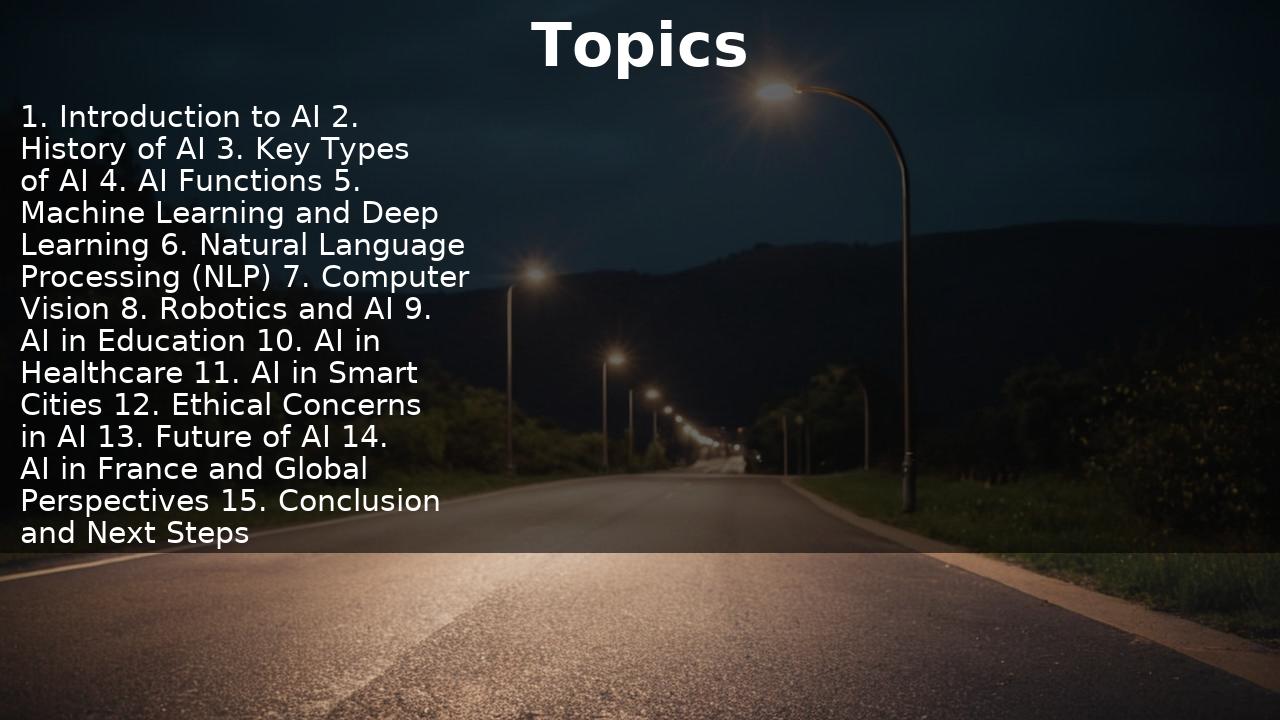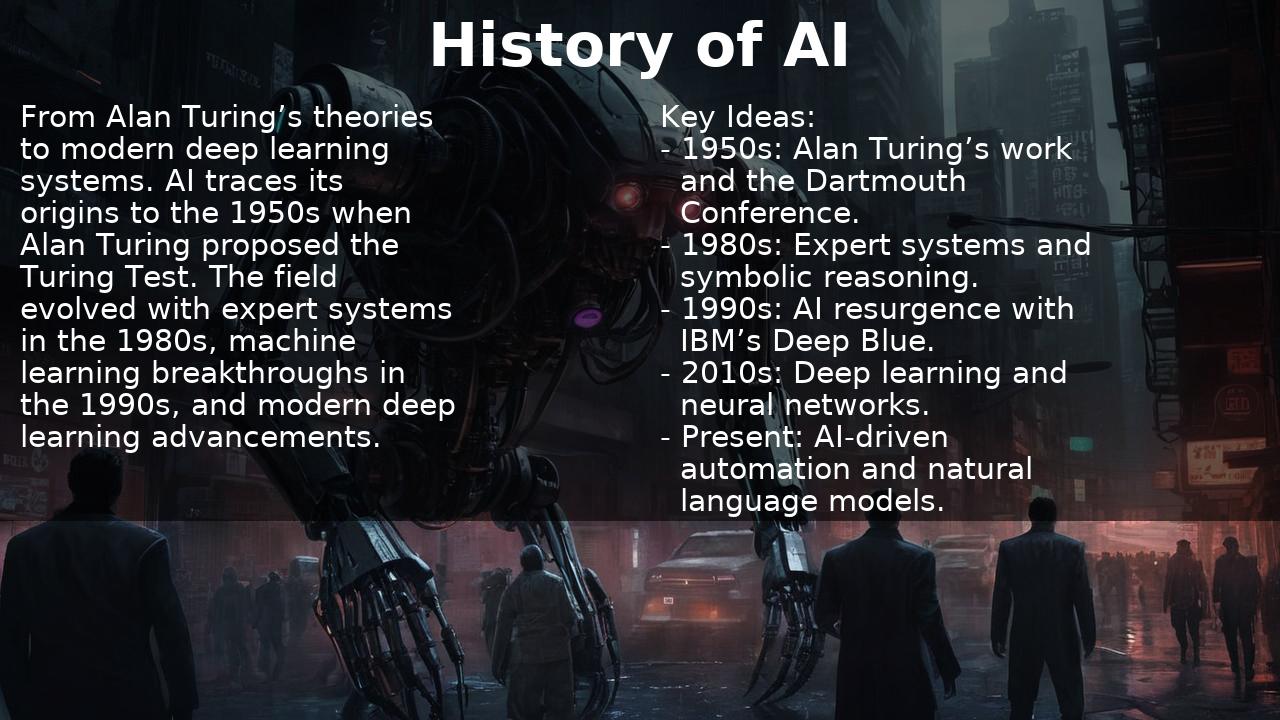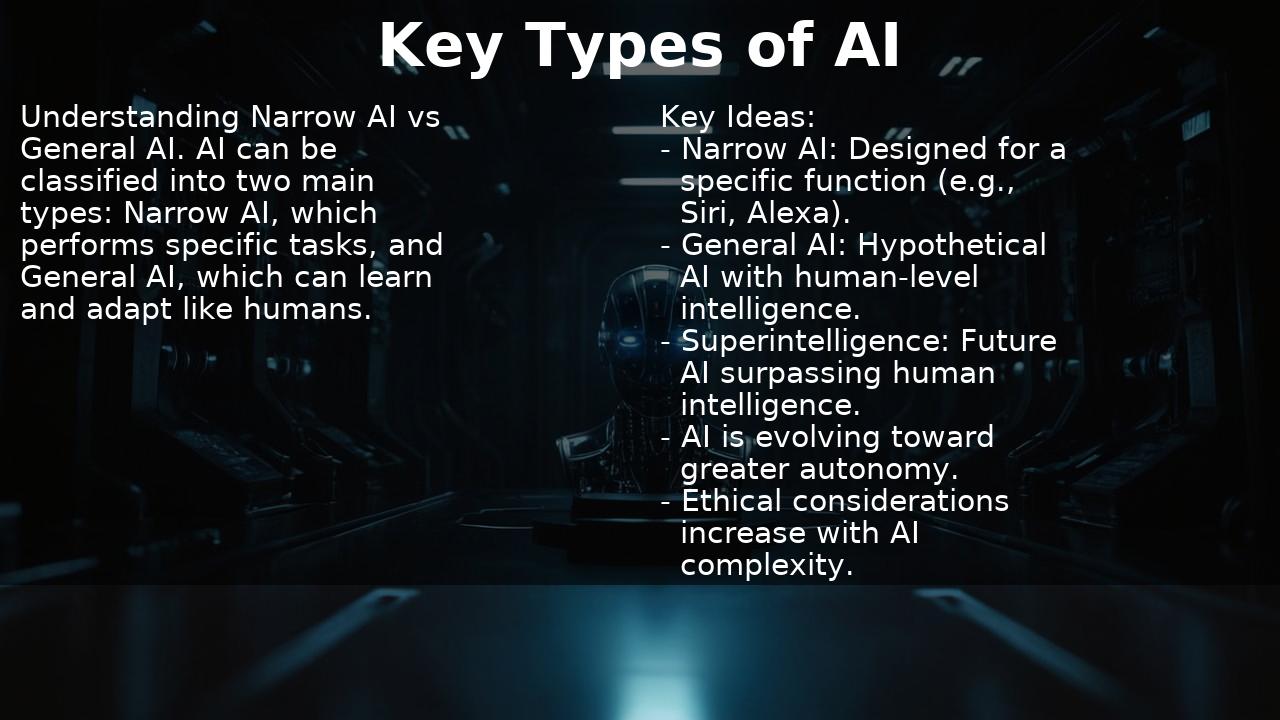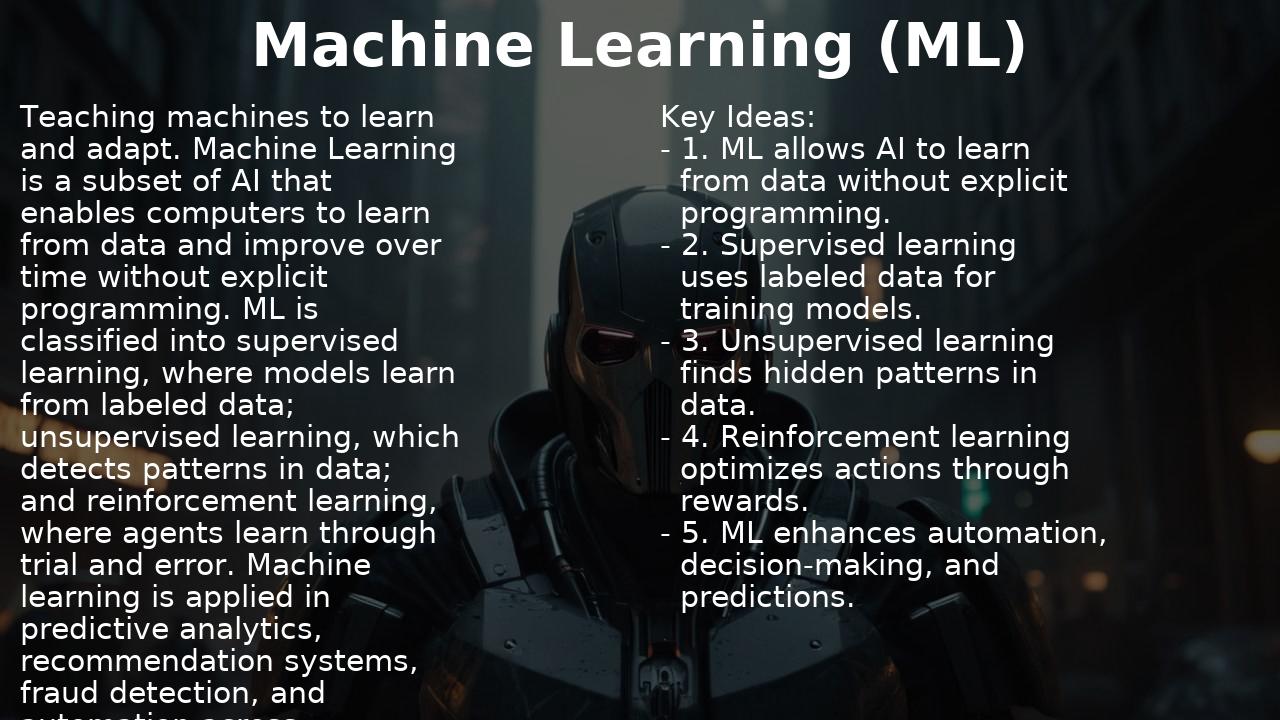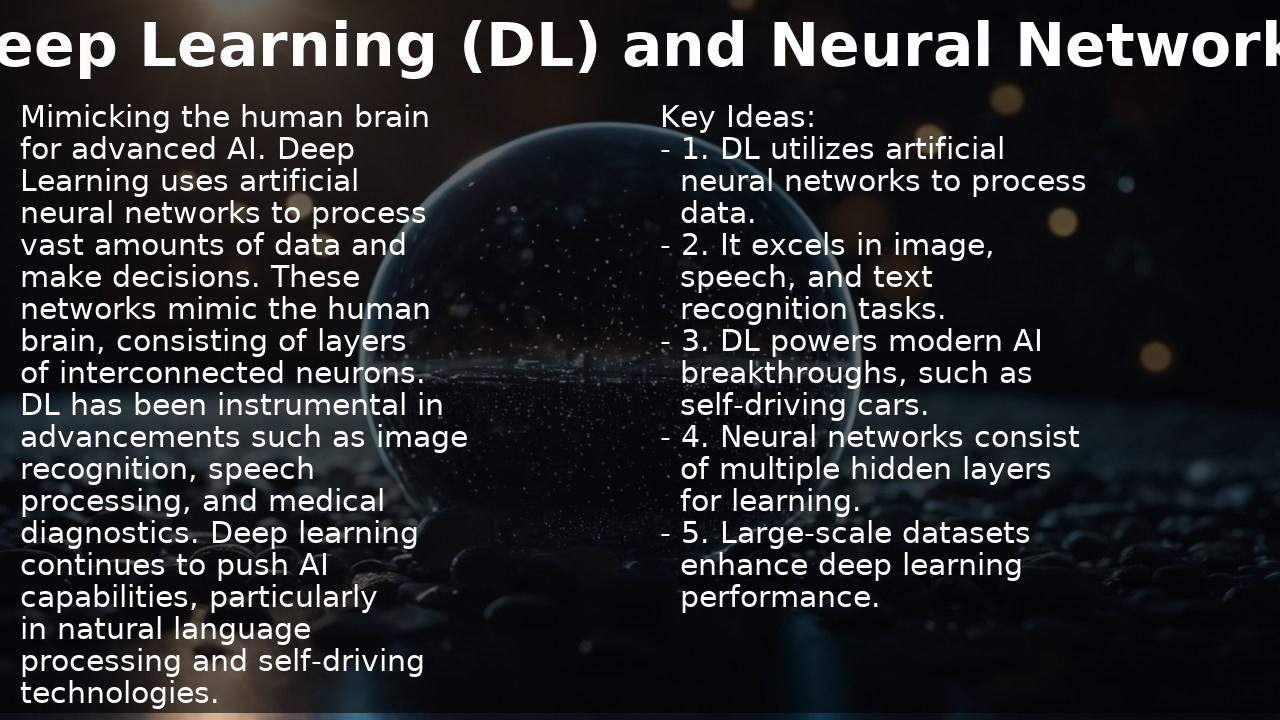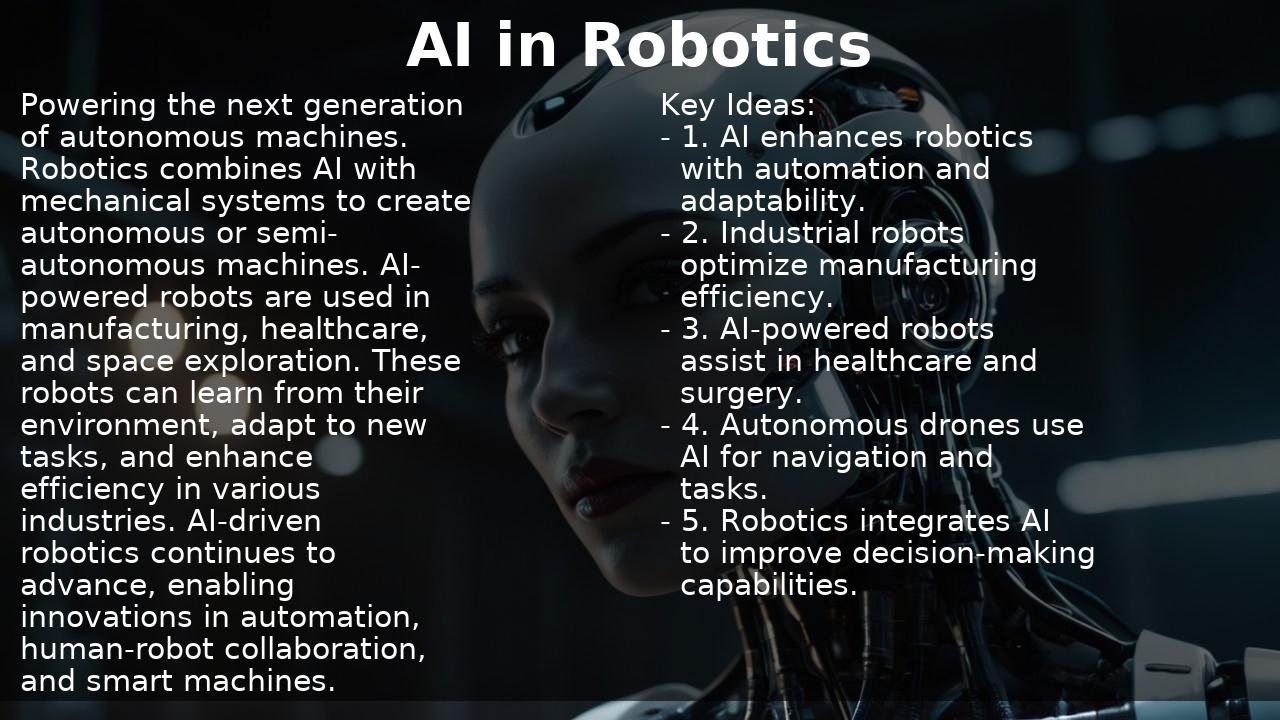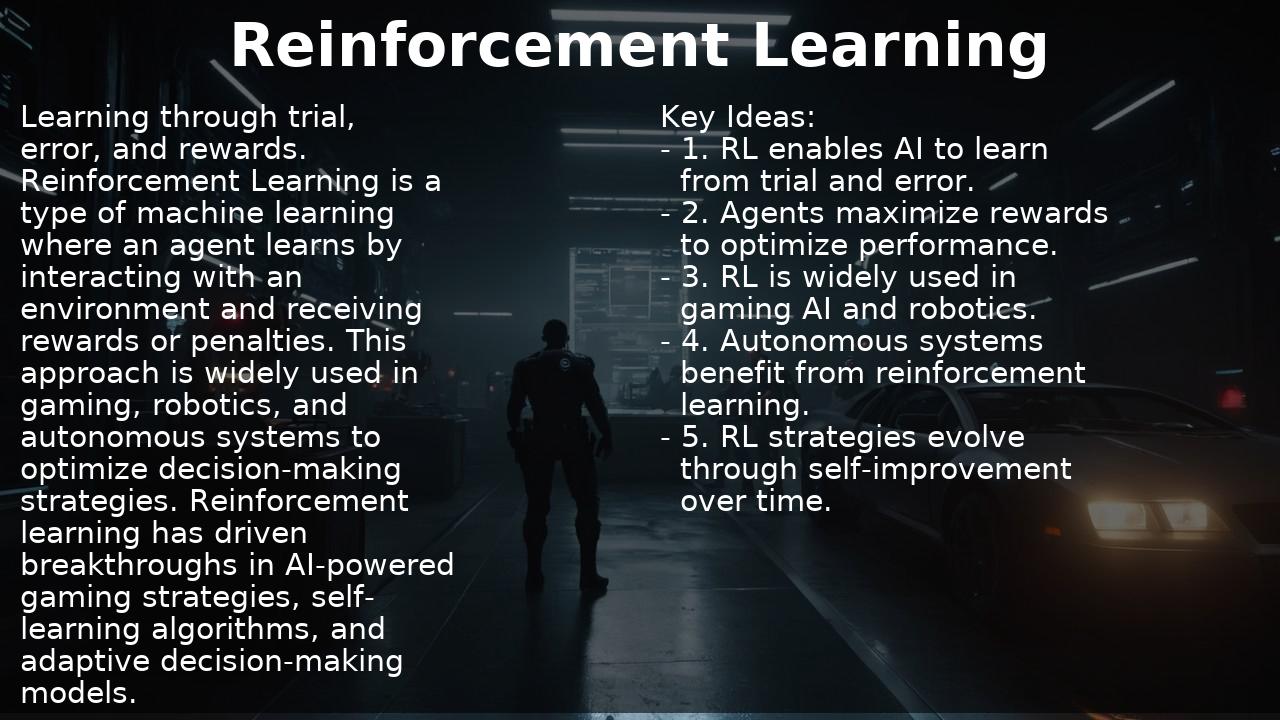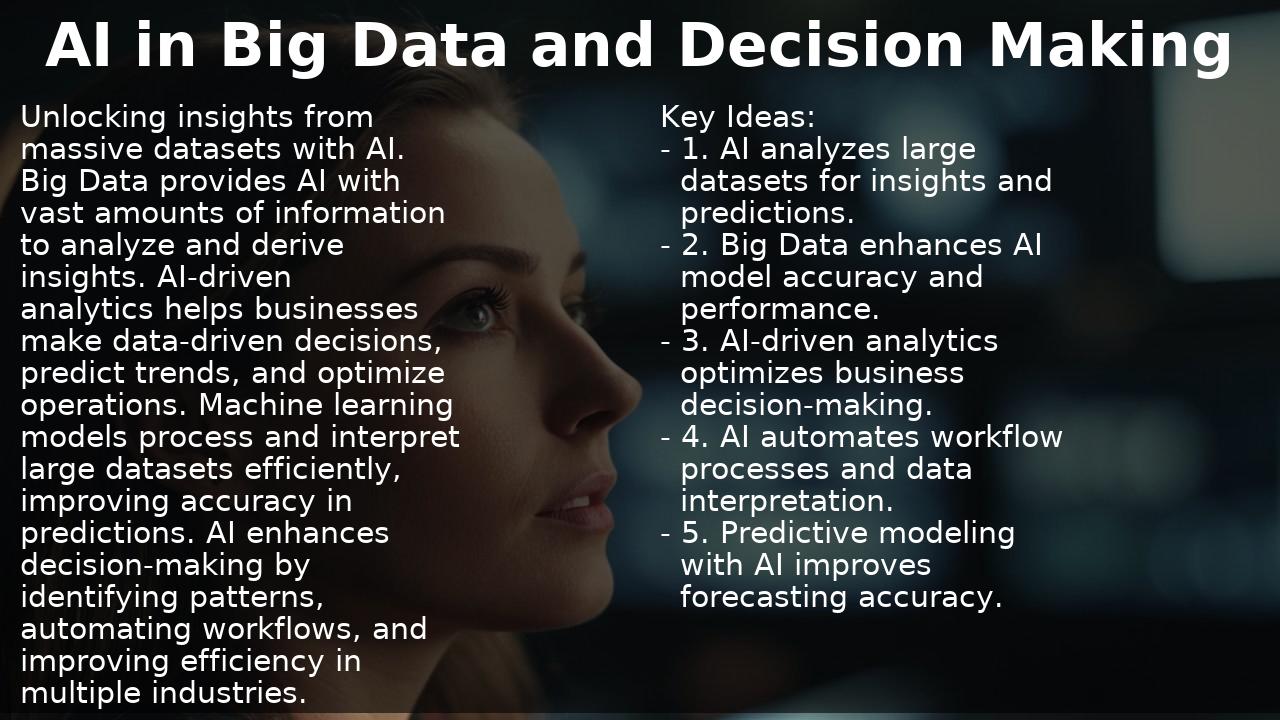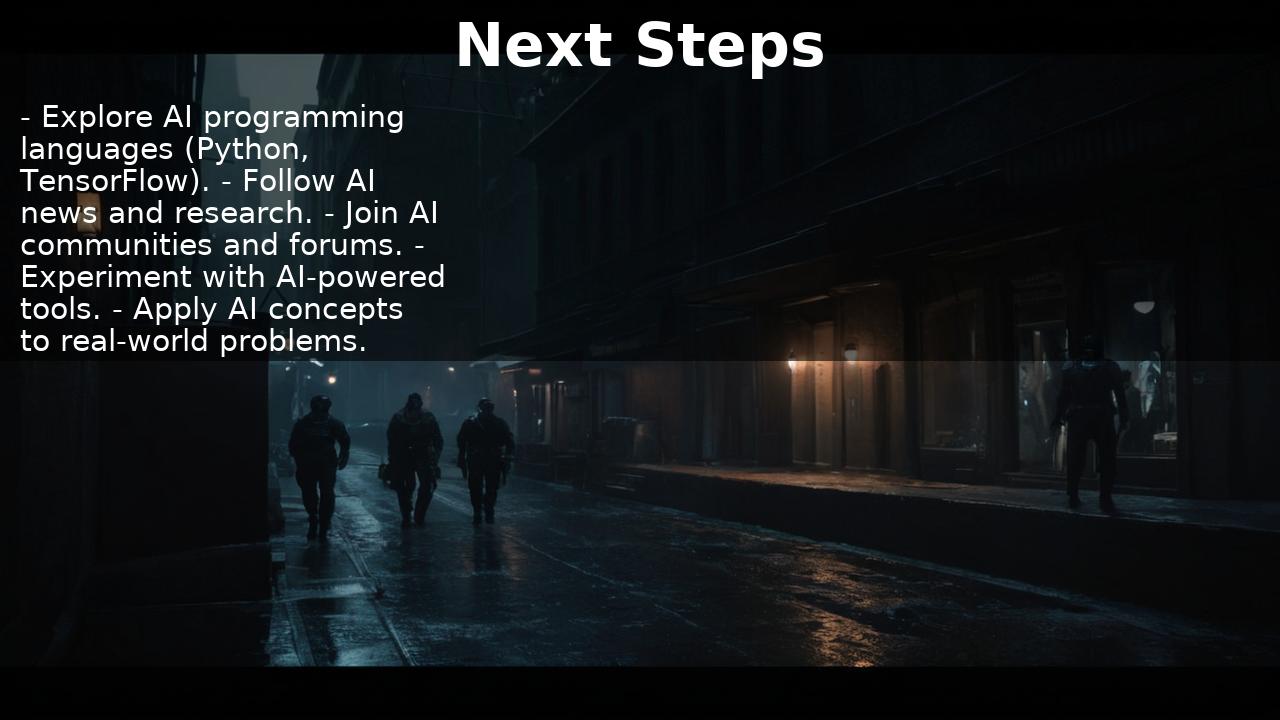Understanding Artificial Intelligence (AI)¶
Artificial Intelligence (AI) is transforming industries worldwide, from healthcare to education, business, and community management. This course provides a comprehensive introduction to AI, covering its history, core concepts, applications, and future impact. By the end of this course, you will understand AI's fundamental principles, key functions, and how it is shaping the modern world.
Topics¶
- Introduction to AI
- History of AI
- Key Types of AI
- Machine Learning (ML)
- Deep Learning (DL) and Neural Networks
- Natural Language Processing (NLP)
- Computer Vision
- AI in Robotics
- Reinforcement Learning
- AI in Big Data and Decision Making
Introduction to AI¶
Redefining what’s possible with machines.
Artificial Intelligence is the simulation of human intelligence by machines. AI encompasses learning, reasoning, problem-solving, perception, and language understanding. It aims to build intelligent agents capable of autonomous decision-making and learning from experience. AI is used in various industries, including healthcare, finance, and transportation, and is continually evolving with advancements in technology.
Key Ideas: 1. AI mimics human cognitive functions. 2. AI applications span multiple industries. 3. AI improves efficiency and decision-making. 4. AI continues evolving with deep learning and ML. 5. Ethical considerations are crucial in AI development.

History of AI¶
Tracing AI's evolution from theory to reality.
AI has a rich history dating back to the 1950s. The Turing Test, introduced by Alan Turing, set the foundation for AI. The Dartmouth Conference in 1956 officially recognized AI as a field of study. Over the decades, AI has evolved through various stages, including expert systems in the 1980s, machine learning breakthroughs in the 2000s, and the modern advancements in deep learning and neural networks.
Key Ideas: 1. AI was formally recognized in 1956. 2. The Turing Test evaluates AI’s ability to mimic humans. 3. Expert systems dominated AI in the 1980s. 4. Machine learning drove AI growth in the 2000s. 5. Deep learning has revolutionized AI applications.

Key Types of AI¶
Exploring AI’s different levels of intelligence.
AI is categorized into three main types: Narrow AI, General AI, and Super AI. Narrow AI is designed for specific tasks, such as virtual assistants and image recognition. General AI, which is still theoretical, aims to perform any intellectual task that a human can do. Super AI surpasses human intelligence and remains a concept in research and fiction.
Key Ideas: 1. Narrow AI is widely used today. 2. General AI is still theoretical. 3. Super AI remains a futuristic concept. 4. AI development is focused on increasing automation. 5. AI’s capabilities expand with technological advances.

Machine Learning (ML)¶
Teaching machines to learn and adapt.
Machine Learning is a subset of AI that enables computers to learn from data and improve over time without explicit programming. ML is classified into supervised learning, where models learn from labeled data; unsupervised learning, which detects patterns in data; and reinforcement learning, where agents learn through trial and error. Machine learning is applied in predictive analytics, recommendation systems, fraud detection, and automation across industries.
Key Ideas: 1. ML allows AI to learn from data without explicit programming. 2. Supervised learning uses labeled data for training models. 3. Unsupervised learning finds hidden patterns in data. 4. Reinforcement learning optimizes actions through rewards. 5. ML enhances automation, decision-making, and predictions.

Deep Learning (DL) and Neural Networks¶
Mimicking the human brain for advanced AI.
Deep Learning uses artificial neural networks to process vast amounts of data and make decisions. These networks mimic the human brain, consisting of layers of interconnected neurons. DL has been instrumental in advancements such as image recognition, speech processing, and medical diagnostics. Deep learning continues to push AI capabilities, particularly in natural language processing and self-driving technologies.
Key Ideas: 1. DL utilizes artificial neural networks to process data. 2. It excels in image, speech, and text recognition tasks. 3. DL powers modern AI breakthroughs, such as self-driving cars. 4. Neural networks consist of multiple hidden layers for learning. 5. Large-scale datasets enhance deep learning performance.

Natural Language Processing (NLP)¶
Bridging the gap between humans and machines through language.
NLP is a branch of AI focused on enabling computers to understand, interpret, and generate human language. It powers applications such as chatbots, machine translation, and sentiment analysis. NLP leverages machine learning and deep learning to analyze text and speech patterns effectively. Advances in NLP have led to the development of AI-powered virtual assistants and real-time language translation.
Key Ideas: 1. NLP enables AI to understand and generate human language. 2. It is widely used in chatbots, translation, and voice assistants. 3. Deep learning improves NLP accuracy and fluency. 4. NLP algorithms analyze text for sentiment and meaning. 5. Speech recognition advancements drive NLP applications.

Computer Vision¶
Enabling machines to see and interpret the world.
Computer Vision allows machines to interpret and process visual data. This technology is used in facial recognition, autonomous vehicles, and medical imaging. It relies on deep learning algorithms to detect and classify objects within images and videos. AI-powered vision systems enhance security, medical diagnostics, and automation in industries like retail and manufacturing.
Key Ideas: 1. Computer vision enables machines to analyze visual data. 2. Facial recognition is a key application of computer vision. 3. Autonomous vehicles rely on vision systems for navigation. 4. Deep learning improves accuracy in object detection. 5. Medical imaging benefits from AI-powered diagnosis tools.

AI in Robotics¶
Powering the next generation of autonomous machines.
Robotics combines AI with mechanical systems to create autonomous or semi-autonomous machines. AI-powered robots are used in manufacturing, healthcare, and space exploration. These robots can learn from their environment, adapt to new tasks, and enhance efficiency in various industries. AI-driven robotics continues to advance, enabling innovations in automation, human-robot collaboration, and smart machines.
Key Ideas: 1. AI enhances robotics with automation and adaptability. 2. Industrial robots optimize manufacturing efficiency. 3. AI-powered robots assist in healthcare and surgery. 4. Autonomous drones use AI for navigation and tasks. 5. Robotics integrates AI to improve decision-making capabilities.

Reinforcement Learning¶
Learning through trial, error, and rewards.
Reinforcement Learning is a type of machine learning where an agent learns by interacting with an environment and receiving rewards or penalties. This approach is widely used in gaming, robotics, and autonomous systems to optimize decision-making strategies. Reinforcement learning has driven breakthroughs in AI-powered gaming strategies, self-learning algorithms, and adaptive decision-making models.
Key Ideas: 1. RL enables AI to learn from trial and error. 2. Agents maximize rewards to optimize performance. 3. RL is widely used in gaming AI and robotics. 4. Autonomous systems benefit from reinforcement learning. 5. RL strategies evolve through self-improvement over time.

AI in Big Data and Decision Making¶
Unlocking insights from massive datasets with AI.
Big Data provides AI with vast amounts of information to analyze and derive insights. AI-driven analytics helps businesses make data-driven decisions, predict trends, and optimize operations. Machine learning models process and interpret large datasets efficiently, improving accuracy in predictions. AI enhances decision-making by identifying patterns, automating workflows, and improving efficiency in multiple industries.
Key Ideas: 1. AI analyzes large datasets for insights and predictions. 2. Big Data enhances AI model accuracy and performance. 3. AI-driven analytics optimizes business decision-making. 4. AI automates workflow processes and data interpretation. 5. Predictive modeling with AI improves forecasting accuracy.

Conclusion¶
This course has provided a foundational understanding of AI, its history, core functions, applications, and future potential. AI continues to evolve, impacting industries and daily life. As AI advances, ethical considerations and responsible AI development remain crucial.
Next Steps¶
- Explore AI projects and tools (e.g., TensorFlow, PyTorch).
- Engage in AI ethics discussions and policy research.
- Apply AI knowledge in real-world applications and case studies.
Slides¶
